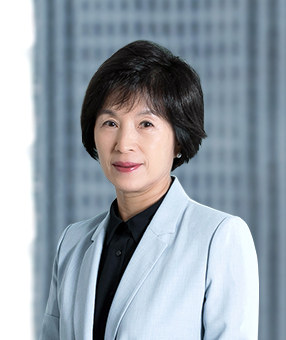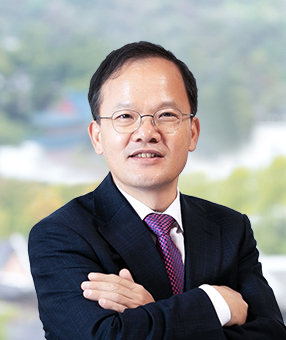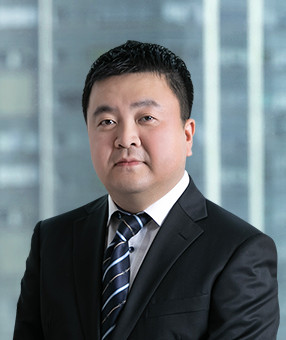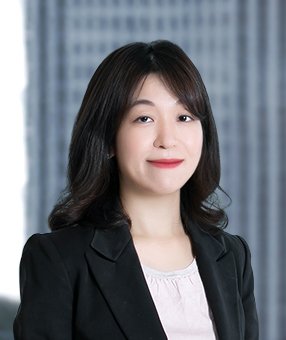Summary
In a patent infringement action filed by Pfizer,1 the Seoul Central District Court rendered a decision finding that another pharmaceutical company directly infringed Pfizer's composition patent even though the infringer did not make the patented composition in Korea, on the basis that the infringer manufactured 13 individual conjugate solutions (the essential components of the patented composition) in Korea and then exported them to a company in Russia for the purpose of mixing the solutions into the patented composition.2
Legal Significance
Korean patent law has strictly respected the principle of territoriality in determining whether acts constitute patent infringement, in that if the patented invention is not actually practiced in Korea, Korean courts have found no infringement. However, in 2019, the Korean Supreme Court rendered a landmark decision in the so-called surgery suture case3 where an exception to this territoriality principle was recognized for the first time in Korean patent law history.
In the surgery suture case, the accused infringers manufactured all of the components of the patented product in Korea, and then exported them to an entity in Japan which assembled the components into the patented product. The Supreme Court held that these activities constituted direct infringement of the patent, even though the patented product was not produced in Korea.4 In this regard, the Supreme Court specifically held that a patented invention may be considered to be practiced in Korea if (i) all of the components of the patented product or semi-finished products having all essential components of the patented product are produced in Korea (first element), (ii) the components are exported to a single entity in a foreign country for the purpose of being processed or assembled into the patented product (second element), and (iii) the processing or assembling is so insignificant or simple that merely manufacturing the components or semi-finished products has reached the state where the functional effects of the patented invention can be realized (third element).
Until now, this has been the only Korean court decision finding infringement on these terms. However, the Seoul Central District Court has now applied this earlier Supreme Court decision to find direct infringement in the patent infringement action filed by Pfizer, making this the second case in Korea to recognize an exception to the territoriality principle. This new case has additional significance in that whereas the earlier Supreme Court decision was directed to a relatively simple medical device, the new decision found the same principle still would apply to a complicated vaccine case.
Facts
Claim 1 of Korean Patent No. 10-1298053 is directed to an immunogenic composition for use as a 13-valent pneumococcal conjugate vaccine (PCV), which comprises 13 distinct polysaccharide-protein conjugates, together with a physiologically acceptable vehicle, wherein each of the conjugates comprises a capsular polysaccharide from a different serotype of Streptococcus pneumonia conjugated to a carrier protein.
A local Korean company, SK Bioscience, entered into a technology transfer and license agreement with a Russian company, and assisted them with obtaining product approval from the Russian regulatory authority, as well as supplying them with the 13 individual conjugate solutions as well as the finished products.5 The Russian company obtained product approval of the finished products, which were produced using the 13 individual conjugate solutions supplied by SK.
Parties' Arguments
Pfizer argued that under the logic of the Supreme Court's decision in the surgery suture case, SK was infringing its patent by manufacturing the 13 individual conjugate solutions in Korea, and then exporting them to a single company in Russia for the purpose of mixing them into the patented composition.
In response, SK argued that: (i) the patented composition should only be interpreted to cover the composition of the finished products which are ready to be administered, and not a bulk composition/simple mixture of the individual conjugate solutions alone, due to the phrase "for use as a 13-valent pneumococcal conjugate vaccine" in Claim 1; (ii) the Supreme Court's earlier decision in the surgery suture case should be limited to simple mechanical inventions, and should not apply to highly complicated vaccine cases; and (iii) the process of mixing the 13 individual conjugate solutions to make the patented composition was not simple or insignificant since it involved very complicated controls and procedures.
District Court's Decision
A. Interpretation of claim
The District Court applied well-established legal principles of claim interpretation, affirmed in a number of earlier Supreme Court decisions, to rule that the scope of Claim 1 was not limited to covering only the composition of the finished vaccine product (i.e., a product completely formulated so as to be ready to be administered), but also covered a bulk composition to be made by mixing the 13 individual conjugate solutions in a predetermined ratio, for the following reasons.
- Claim 1 was literally directed to "an immunogenic composition for use as a 13-valent pneumococcal vaccine," and not limited to a composition "which is ready to be used as a pneumococcal vaccine." Thus, it is natural to consider that Claim 1 also covers a composition which is used during the process of preparing a final bulk composition in a form that can be administered directly to a human.
- As the Patent Court held in the related patent invalidation action,6 the key technical idea of the claimed invention resided not in simply making a composition that comprised conjugates made from 13 serotype polysaccharides and a carrier protein, but rather in making a composition that had immunogenicity against all 13 serotypes. Further, the final bulk solution or finished vaccine product additionally contained a buffer solution, an adjuvant, etc. as well as the claimed composition. However, the adjuvant merely enhanced immunogenicity, which was already expressed, and the other additives were irrelevant to immunogenicity. Thus, the key technical idea of Claim 1 was not achieved only after the final finished vaccine product was made.
- The court noted that there were descriptions in the patent specification such as the following: "After the individual glycoconjugates are purified, they are compounded to formulate the immunogenic composition of the present invention, which can be used as a vaccine. Formulation of the immunogenic composition of the present invention can be accompanied using art-recognized methods." Accordingly, the immunogenic composition of the present invention was not necessarily dependent on being formulated into the finished product.
B. Application of the Supreme Court's decision in the surgery suture case
The present case was the first application of the Supreme Court's decision in the surgery suture case to another infringement case in Korea. Although SK argued that the Supreme Court's decision should not apply to biological vaccine inventions, the court rejected this argument and affirmed that the need for substantive protection of patent rights in this case should not be denied simply because a biological invention was involved.
The court then provided its findings in relation to the three elements of the Supreme Court's decision in the surgery suture case.
First element
The court found that the 13 individual conjugate solutions which SK manufactured in Korea and exported to Russia were semi-finished products having all of the essential components of the composition of Claim 1, on the following grounds.
- It was very important in the present invention to establish specific processes for making conjugates as well as to select suitable carrier proteins to prepare the 13 individual conjugate solutions. Thus, it was clear that each of the 13 individual conjugate solutions SK manufactured should have been prepared so as to provide immunogenicity against each of the 13 serotypes. It was also clear that the composition to be prepared from these solutions would have the immunogenicity intended by the patented invention.
- As admitted by SK itself, the bulk composition made by mixing the 13 individual conjugate solutions in Russia was the same as the bulk composition from which SK's own approved vaccine was produced. There was no dispute between the parties that the bulk composition for SK's own approved vaccine was within the scope of Claim 1. Thus, the process of mixing the 13 conjugate solutions was all that was needed to produce the composition of Claim 1.
Second element
Based on evidence including the agreement between SK and the Russian company, the court found that SK's 13 individual conjugate solutions were intended for export to the Russian company and for processing with a mixing process in Russia in order to produce a composition within the scope of Claim 1.
Third element
The court also found that the mixing process that was intended to take place in Russia was very simple and insignificant for several reasons.
- Claim 1 specified the types of serotype and carrier protein of the individual conjugates, and disclosed the element of adding a physiologically acceptable vehicle. In addition, Claim 1 required that the claimed invention be a 13-valent immunogenic composition, which suggested that a mixing process was needed. However, there was no particular limitation on the mixing process in Claim 1.
- The patent specification described manufacturing processes for making the conjugates for each serotype in detail with examples. However, the specification did not have any special descriptions regarding the mixing process, and merely described that "[a]fter the individual glycoconjugates are purified, they are compounded to formulate the immunogenic composition of the present invention, which can be used as a vaccine."
- SK also filed patent applications directed to PCVs. However, they did not add any special limitations regarding the mixing process to the claims, and had very similar descriptions regarding the mixing process as in the specification of the present patent. Patent applications filed by other pharmaceutical companies also had similar descriptions.
- As such, there would have been no technical difficulty for a person skilled in the art to conduct the mixing process, and when compared to the entire process for making the claimed composition, the mixing process was rather insignificant.
- Based on the license agreement between SK and the Russian company, the technology for the mixing process was apparently transferred to the Russian company, so it was hard to see that there would have been any technical difficulty for the Russian company to solve in order to achieve the effects of Claim 1.
In conclusion, the court held that SK directly infringed the patent right of Claim 1 by manufacturing the 13 individual conjugate solutions in Korea.
Comments
In the surgery suture case, the Supreme Court stated that this new exception to the territoriality principle was intended to provide substantial protection of patent rights. The District Court's decision in the Pfizer case further improves effective protection of patent rights given that it is now clarified that SK's acts to try to avoid infringement in reliance on the territoriality principle, after being found to infringe Pfizer's patent following their initial product approval in Korea, are still infringing.
An appeal against the District Court's decision is currently pending before the IP High Court (formerly the Patent Court). Confirmation of the decision by the IP High Court would be an important step for ensuring the effective protection of patent rights in Korea against this type of behavior by potential infringers.
1 The infringement action was filed by Pfizer Korea, an exclusive licensee, and Wyeth, the patentee of Korean Patent No. 10-1298053. Kim & Chang represented Pfizer and Wyeth in all of the patent litigations involving this patent.
2 Seoul Central District Court Case No. 2020 KaHap 591823 decided on August 10, 2023.
3 Y Jacobs Medical vs. CS Inc., et al., (Supreme Court Case Nos. 2019Da222782 and 2019Da222799 (consolidated) decided on October 17, 2019).
4 Korean patent law recognizes indirect infringement, which is similar to the contributory infringement under the U.S. patent law. However, indirect infringement is only recognized if the patented product is produced in Korea (Supreme Court Case No. 2014Da42110; July 23, 2015).
5 Pfizer also asserted infringement with respect to SK's manufacture and exportation of the finished products, but SK argued such acts were exempt from infringement under the research exemption in Article 96 (1) (i) of the Korean Patent Act. The Seoul District Court rejected SK's defense, finding that the research exemption should apply only to the person for whom the research or experiment was conducted, although it does not necessarily need to be conducted by the person him- or herself.
6 SK vs. Wyeth (Patent Court Case No. 2015 Heo 4613; November 29, 2017). SK filed an invalidation action against KR10-1298053, which was upheld as valid by the IPTAB, the Patent Court, and then the Supreme Court. SK was sued for infringement in 2015 after receiving product approval in Korea, which resulted in a court-settlement decision where SK expressly agreed not to manufacture or sell their finished products.
Related Topics








